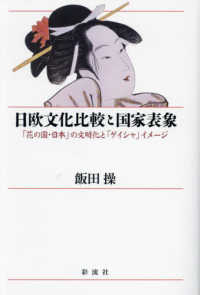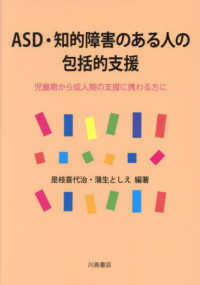- ホーム
- > 洋書
- > 英文書
- > Literary Criticism
Full Description
Ḥikāyat Abu al-Qāsim, probably written in the 11th century by the otherwise unknown al-Azdī, tells the story of a gate-crasher from Baghdad named Abū al-Qāsim, who shows up uninvited at a party in Isfahan. Dressed as a holy man and reciting religious poetry, he soon relaxes his demeanour, and, growing intoxicated on wine, insults the other dinner guests and their Iranian hometown.
Widely hailed as a narrative unique in the history of Arabic literature, Ḥikāyah also reflects a much larger tradition of banquet texts. Painting a picture of a party-crasher who is at once a holy man and a rogue, he is a figure familiar to those who have studied the ancient cynic tradition or other portrayals of wise fools, tricksters and saints in literatures from the Mediterranean and beyond. This study therefore compares Ḥikāyah, a mysterious text surviving in a single manuscript, to other comical banquet texts and party-crashing characters, both from contemporary Arabic literature and from Ancient Greece and Rome.
Contents
Acknowledgements
Part 1Introductiona. Manuscriptb. Authorship and Datingc. Editionsd. Translationse. Summary of Eventsf. Scholarshipg. A Mediterranean Table
Part IIChapter 1: A Sampling of the Ḥikāyah
Part IIIChapter 2: A Microcosm Introduceda. Mimesis or Mannerism?b. Baghdad the Party-Crasherc. Those Camels have Passed
Part IVChapter 3: Crashing the Text
Part VChapter 4: Mujun is a Crazy Game
Part VIChapter 5: The Cosmic Crashera. Abū al-Qāsim as Microcosmb. Abī al-Qāsim as Iblīsc. The Microcosm is a Man
Part VIIConclusiona. Bojangles Won't Danceb. Philemon and Baucis
BibliographyIndex








